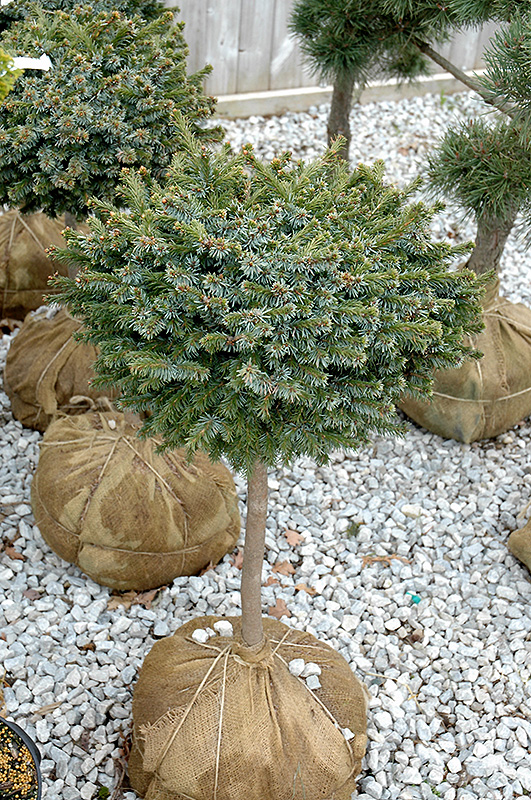Pimoko Spruce (tree form)
Picea omorika 'Pimoko (tree form)'
Height: 4 feet
Spread: 24 inches
Sunlight:
![]()
Hardiness Zone: 4a
Description:
A small tree form with great texture and color; showy, dark green needles are accented with a bluish cast and silvery undersides which seem to sparkle, reddish brown buds add to the effect; a beautiful and unusual accent choice
Ornamental Features
Pimoko Spruce (tree form) is primarily valued in the landscape or garden for its highly ornamental lollipop-like shape. It has attractive dark green foliage with silver undersides which emerges light green in spring. The needles are highly ornamental and remain dark green throughout the winter. The smooth brick red bark adds an interesting dimension to the landscape.
Landscape Attributes
Pimoko Spruce (tree form) is a dense evergreen tree, selected and trained to grow in a small tree-like form with the primary plant grafted high atop a standard. It lends an extremely fine and delicate texture to the landscape composition which can make it a great accent feature on this basis alone.
This is a relatively low maintenance tree. When pruning is necessary, it is recommended to only trim back the new growth of the current season, other than to remove any dieback. It has no significant negative characteristics.
Pimoko Spruce (tree form) is recommended for the following landscape applications;
- Mass Planting
- General Garden Use
Planting & Growing
Pimoko Spruce (tree form) will grow to be about 4 feet tall at maturity, with a spread of 24 inches. It tends to be a little leggy, with a typical clearance of 2 feet from the ground. It grows at a slow rate, and under ideal conditions can be expected to live for 50 years or more.
This tree should only be grown in full sunlight. It does best in average to evenly moist conditions, but will not tolerate standing water. It is not particular as to soil type or pH. It is quite intolerant of urban pollution, therefore inner city or urban streetside plantings are best avoided, and will benefit from being planted in a relatively sheltered location. This is a selected variety of a species not originally from North America.



